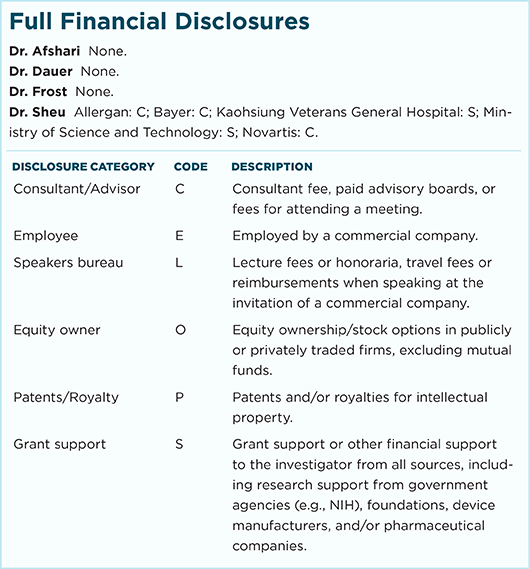Download PDF
A massive genome-wide association study has linked Fuchs endothelial corneal dystrophy (FECD) to faulty genes at 4 genetic loci, a finding that eventually could give affected families a way to determine which members are genetically predisposed to developing Fuchs later in life.1
Fuchs affects 4% of adults over age 40 and is the most common reason for corneal transplantation in the United States. Its heritability is estimated at 39%.
Worldwide effort. The scientists spent 12 years recruiting and genotyping 2,075 Fuchs patients and 3,342 controls at 16 research sites around the world. They also tested cornea tissue from eye banks and from patients undergoing transplantation. Analyses showed that genetic variations at the 4 loci predicted Fuchs cases with an accuracy of 78%, they wrote in Nature Communications.
“Previously, there was 1 known FECD locus. We’ve expanded that number to 4. These findings provide a deeper understanding of the pathology of FECD, which in turn will help us develop better therapies for treating or preventing this disabling disease,” said Natalie A. Afshari, MD, at the University of California, San Diego.
Although these 3 new genetic loci were not previously linked to Fuchs or other corneal dystrophies, “in other organs and in animal models, they are known to have roles in several cellular processes,” Dr. Afshari said. “They can affect a plasma membrane pump for water and ion transport, maintenance of cell membranes, tissue integrity, and cell-to-cell contact.” She added, “Those are the kind of roles that the proteins encoded at these loci play in keeping the corneal endothelium healthy.”
The researchers also confirmed the previously identified fourth locus, TCF4 (transcription factor 4), which is involved in cellular replication.
Gender-related risks. In addition to suggesting possible mechanisms of disease pathogenesis, the researchers reported the first known gender-specific genetic risks for Fuchs. “We know that women are more affected by the disease than men. And here we found that the LAMC1 variant [laminin gamma-1] confers higher risk among women, while the TCF4 variant confers greater risk in men,” Dr. Afshari said.
LAMC1 function is important because it has a role in normal basement membrane deposition, suggesting that the altered gene might lead to thickening of Descemet’s membrane in Fuchs.1
The other 2 loci that the researchers linked to Fuchs were ATP1B1, which encodes a subunit of the sodium-potassium plasma membrane pump, and KANK4 (KN motif- and ankyrin repeat domain-containing protein), which might help regulate actin stress fibers, Dr. Afshari said. KANK proteins are thought to hold endothelial cell nuclei in place through cellular adhesion of the endothelial cytoplasmic layer.1
It will take further studies to understand how the 4 gene loci impact heritability, disease onset, and progression rates in Fuchs families, Dr. Afshari said. But the research might eventually lead to screening tests or even to gene-based therapies, she said. “Family members who have Fuchs are concerned about the risk for their children and, especially, their grandchildren. I tell them, ‘By the time your grandchildren are affected—and probably much sooner—we will likely be doing genetic corrections.’”
—Linda Roach
___________________________
1 Afshari NA et al. Nat Commun. 2017;8:14898. doi:10.1098/ncomms14898.
___________________________
Relevant financial disclosures—Dr. Afshari: None.
For full disclosures and disclosure key, see below.

More from this month’s News in Review